Bariloche, located in the Northern Patagonia region of Argentina, has a reputation of being the jumping off spot for multi-day treks in one of the most beautiful regions of the world. But what many don’t know, is how accessible, affordable, and beautiful the day hikes in and around the town are.
Despite being a small ski town with a heavy Bavarian/Swiss influence, the town and nearby areas are blessed with public transit, making it easy for single day hikes.
This short guide will provide information regarding some of the best day hikes in Bariloche, as well as where to stay and how to get around the town using public transit.
Disclosure: I only recommend products I would use myself and all opinions expressed here are my own. This post may contain affiliate links that at no additional cost to you, I may earn a small commission.
For all hikes listed below, check out the bus timetables at MI BUS website here.
Villa Tacul Loop
- Distance: 15km
- Elevation Gain: 590m
- Time: 3.5 hours
- Trail Type: Loop
- Difficulty: Easy
- Washroom Facilities: None on route
full Villa Tacul trail guide click here
For an easy stroll through the beautiful LLao LLao National Park, check out the Villa Tacul Loop. This is a great introduction to what Bariloche can offer.
This 15km walk covers the perimeter of the peninsula and provides excellent views of the Nahuel Huapi Lake and mountains. There is also a small 1km climb up to a stunning viewpoint (Cerro Lllao Lllao) and many optional beaches to explore.
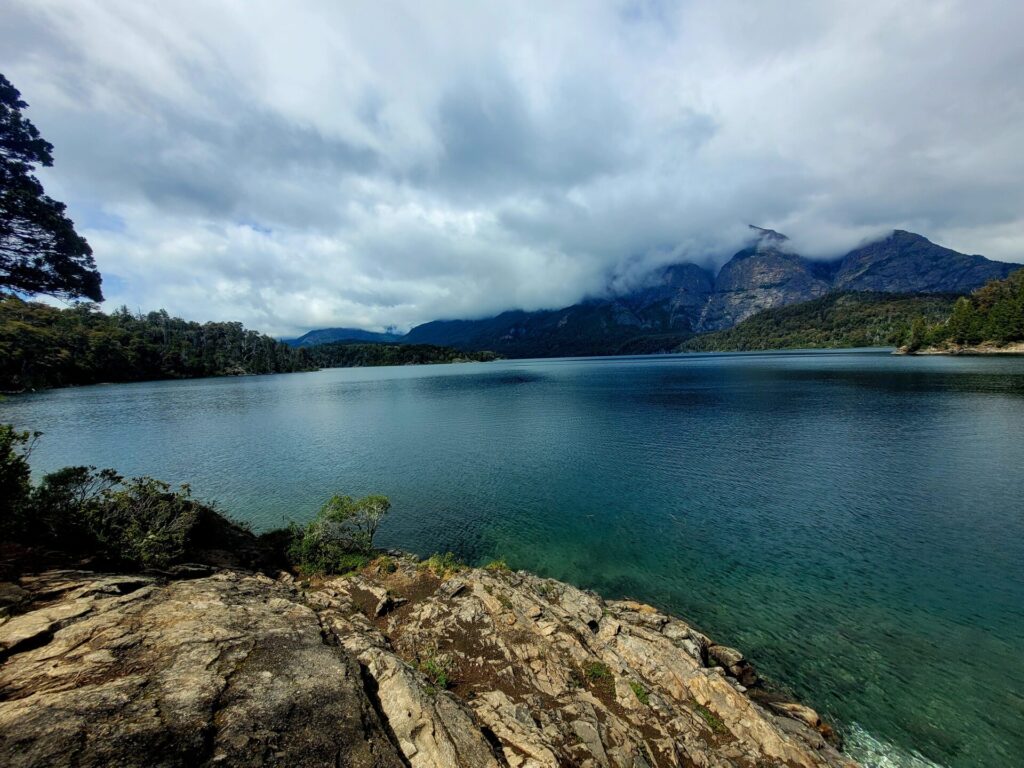
Popularity: There are many intersecting hikes throughout the park, so expect to see a lot of foot traffic around the area.
How to Reach the Trailhead
- Line 20
- Route: Bus Terminal – Downtown (Centro) – Llao Llao
- Price: 92 ARS per way
- Duration: 50 minutes
Bus #20 leaves the main terminal in Bariloche as early as 04:00, Monday to Sunday and runs until 02:00. The bus runs every 15 minutes Monday to Friday and every 20 minutes Saturday, Sundays, and holidays. Llao Llao stop is the 7th from the main terminal.
Refugio Frey
- Distance: 21km
- Elevation Gain: 783m
- Time: 6 hours
- Trail Type: Out and Back
- Difficulty: Moderate
- Washroom Facilities: None on route, toilets in Villa Cerro Catedral town and at the Refugio
full Refugio Frey trail guide click here
Refugio Frey is one of the more popular routes in Bariloche. This day trip can be extended to a multiday trip, or overnight stay at the gorgeous mountain refuge. Set to a backdrop of mountains and lakes, this hike is stunning the entire way.
There are several routes to take, however, the simplest and least intense is the Villa Cerro Catedral route.
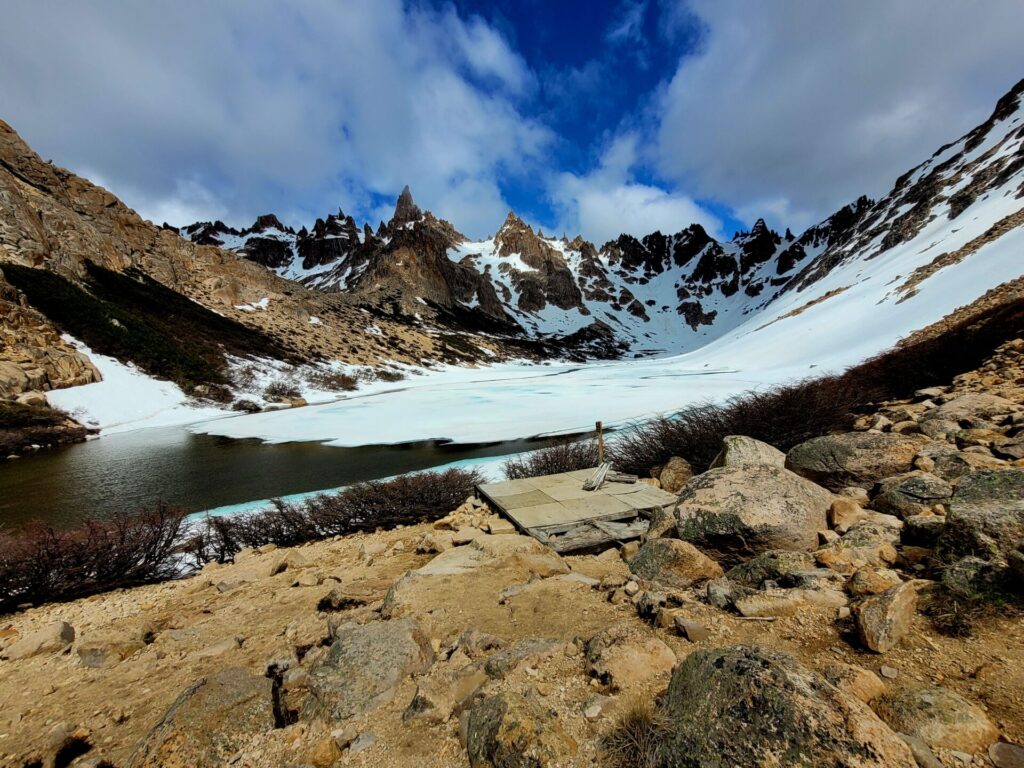
Popularity: Arguable one of the best hikes in Bariloche, this route is very popular. Get the first bus in the morning to avoid crowds along the narrow paths
How to Reach the Trailhead
- Line 55
- Route: Bus Terminal – Downtown (Centro) -Catedral
- Price: 296 ARS per way
- Duration: 50 minutes
Bus #55 leaves the main terminal at 07:00 until 20:00, Monday to Monday. The buses run hourly, however are split into two routes. One leaves from Avenida de Los Pioneros and the other runs from Avenida Exequiel Bustillo.
Cerro Otto
- Distance: 9km
- Elevation Gain: 629m
- Time: 3.5 hours
- Trail Type: Loop
- Difficulty: Moderate/Hard
- Washroom Facilities: None
full Cerro Otto trail guide click here
This challenging, yet quick day hike is a great way to get the heart pumping and see views of Bariloche. This route climbs through neighbourhood back roads/trails, before reaching the hillside peak with spectacular views.
Add a return trip down (or up) with the chair lift if you want to give your legs a break.
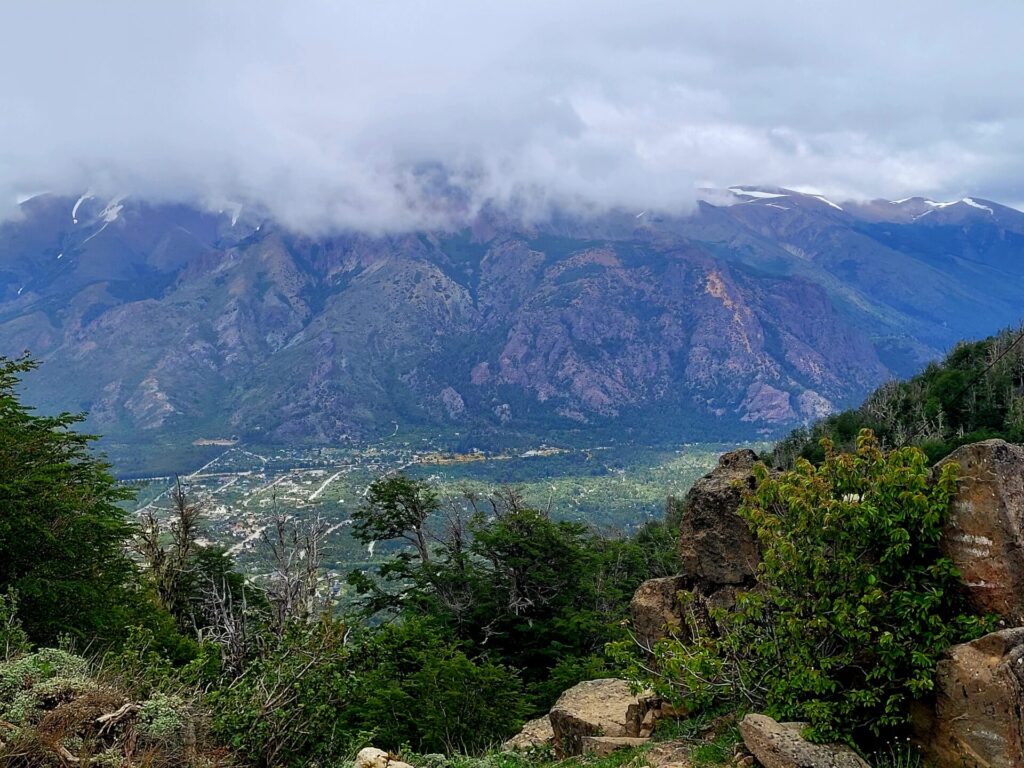
Popularity: While the viewpoint may attract crowds during the winter, the spring and summer months are relatively quiet. Don’t be surprised if you have the entire route to yourself.
How to Reach the Trailhead
- Line 20
- Route: Bus Terminal – Downtown (Centro) – Llao Llao
- Price: 92 ARS per way
- Duration: 10 minutes
Bus #20 leaves the main terminal in Bariloche as early as 04:00, Monday to Sunday and runs until 02:00. The bus runs every 15 minutes Monday to Friday and every 20 minutes Saturday, Sundays, and holidays. Get off at Avenida Bustillo (Km 5) in front of A Orillas del Lago to reach the trailhead.
Best Time to Hike in Bariloche
The official hiking season in Bariloche begins at the start of summer in December and lasts until February. These are great months to hike, as the trails will be clear of snow, and the weather will be warmer, usually ranging between 15-25 degrees Celsius.
If you are a fan of the less crowded shoulder season, the months of October-November and March-April are also good, if not better.
Visiting during October to November will avoid the busy season. Spring in Bariloche is filled with blooming flowers and mild temperatures, which is perfect for hiking. Some trails with higher elevations may have some lingering snow, but the trails are still accessible.

March-April starts the beginning autumn in Argentina. Bariloche will transform with a dramatic change of fall colours and the beginning of snow in higher elevations.
How to Get to Bariloche
Argentina has an extensive public transit network spanning across the entire country. Argentina is a very big country, so while this network is vast, it can also be very time consuming. Some of the longer bus journeys can range from 10-24 hours.
The easiest and most time conscious way to get to Bariloche, is to fly. Direct flights from Buenos Aires (either EZE or AEP) depart multiple times a day and take around 2 hours 20 minutes.
If you do not have a direct flight and are transferring airports, a shuttle service is an easy and convenient way to travel between routes.
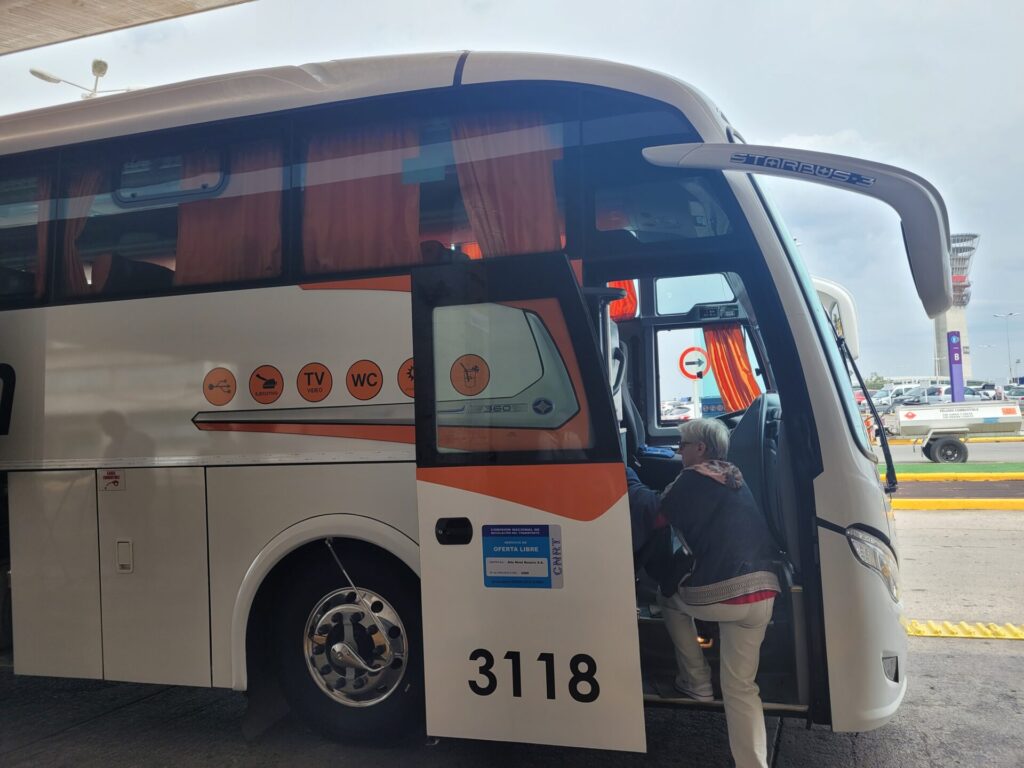
Tienda Leon runs from Ezeiza Airport to Aeroparque and vice versa. It costs 2400 ARS (~ $19 CAD) for the transfer and takes 1-1.5 hours. If you need to transfer between airports, I’d recommend giving yourself at least 4 or 5 hours between flights if arriving internationally and 2 hours for domestic flights. It took me almost 1.5 hours to get through customs on my initial arrival.
Ezeiza Airport to Aeroparque
- In Ezeiza, the service desk is located past passport control, on the left-hand side, just before the exit doors
- Services run hourly between 5:00am-11pm
- Bus stop is 100m outside of the airport terminal, across the road
Aeroparque to Ezeiza Airport
- In Aeroparque, the service desk is in Arrivals, next to the car rental booths.
- Services run hourly between 6:30am-11:30pm
- Bus drop off is through the doors across from the service desk. There are signs along the walls indicating the bus lines. This area becomes very congested at times
How to Get Around Bariloche
Bariloche is a town that can easily be explored by foot, car, or public transit. The main town center has hotels, shops, restaurants, and grocery stores located within walking distances from one another.
All the hikes outlined in this Bariloche trekking itinerary are accessible via public transit. Mi BUS, the main bus company, is affordable, easy to use and leaves on a timely manner.
Using your own vehicle is also an option, as there are plenty of parking areas near or around the trailheads.
What is a SUBE Card and How to Use One
SUBE Cards are electronic contactless cards used to travel on Argentina’s extensive bus systems. They are charged with credits and can be refilled at most local Kioscos (convenience store) and shops. A SUBE purchased in any city can be used throughout the country.
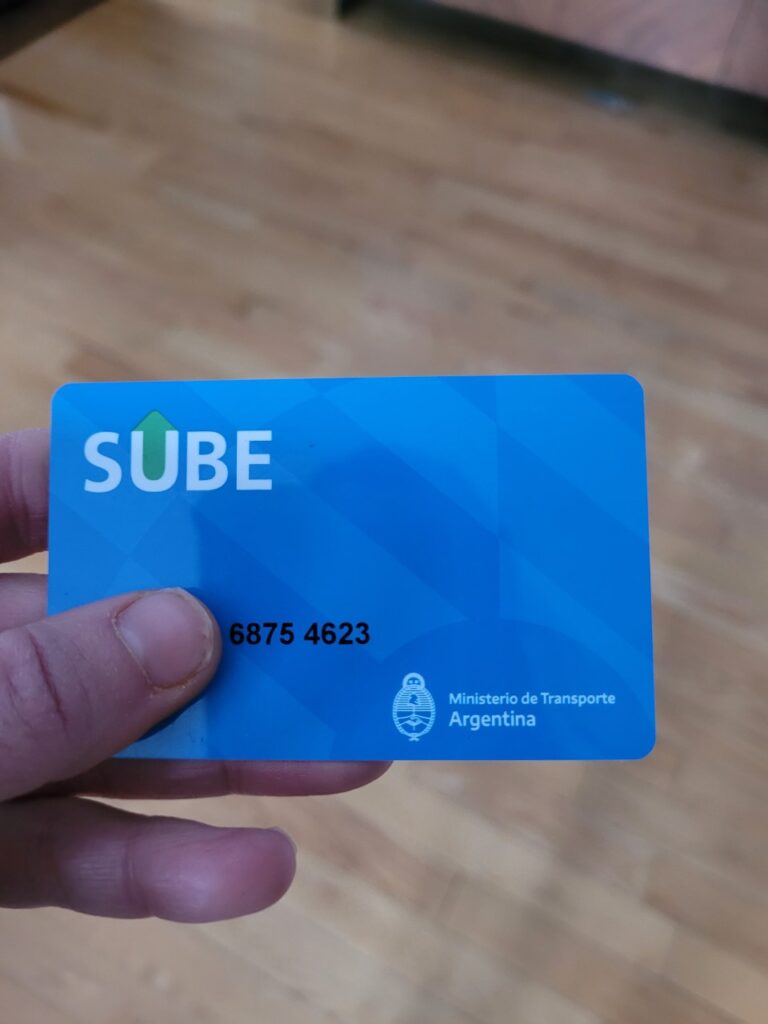
Where to Buy a SUBE Card in Bariloche
Most online sources will tell you, that SUBE cards can be purchased at any Kioscos in Bariloche, however after visiting 6 different stores, I can confirm this information is not very accurate, at least from my experience. Stores will recharge your SUBE, but most do not sell the physical card.
This card can be purchased in Centro Civico at the tourist office (beside the clock tower).
Address: Libertad 56, R8400 San Carlos de Bariloche, Río Negro, Argentina

Try to plan your visit during the weekday, as this store is only opened from 8am-3pm, Monday to Friday. Make sure you bring your passport or other form of identification, as you won’t be able to obtain one without. Cards are free of charge to pick up but cost 100 ARS to activate. Unfortunately, you cannot activate the card at the store.
Where to Activate your SUBE
To activate the card, you then visit a Kioscos to charge it. Not all Kioscos charge cards either, despite advertising it. I suggest charging the cards at the stores in front of the bus stops on Francisco Pascasio Moreno 460, San Carlos de Bariloche. I had success with those stores on several occasions.
If you cannot obtain a SUBE, there is a common practice to offer locals cash in exchange to use their card. While it’s not an ideal situation and embarrassing (happened to me), the people of Bariloche are polite enough to help struggling tourists.
How Much to Add to the SUBE
It’s hard to determine how much to add to the card, as the bus prices aren’t widely advertised anywhere, and most online sources I saw were inaccurate. From my experience, I’d recommend adding around 2500 ARS ($20 CAD) to cover the cost of three days. That will include roundtrip to the airport and three hiking locations. You can always top up the card as you go and can even ride with a negative balance of 50 ARS.
Where to Stay in Bariloche
Centrally locating yourself close to all the amenities is ideal for this three-day trekking itinerary. The below hotels are all within 1-2 blocks from all the popular shopping areas, attractions, and local bus stops.
I stayed at the Hotel Plaza Bariloche. Breakfast is included in the price and the rooms were adequate. The room did not come with a kettle or fridge, so that is something to be aware of if you are looking for a self-catering option in the town.

Additional Places to Stay
Additional Resources
Whether you spend three days, one week or a month, Bariloche has enough adventure to keep you busy and entertained. For additional information regarding multiday treks around the areas, I’d recommended checking out Trek Bariloche. This is an excellent resource for detailed guides on many hiking opportunities around Bariloche.
Further Exploring in Argentina
If you find yourself with extra time in Argentina, head north to the small town of Iruya in the province of Salta.
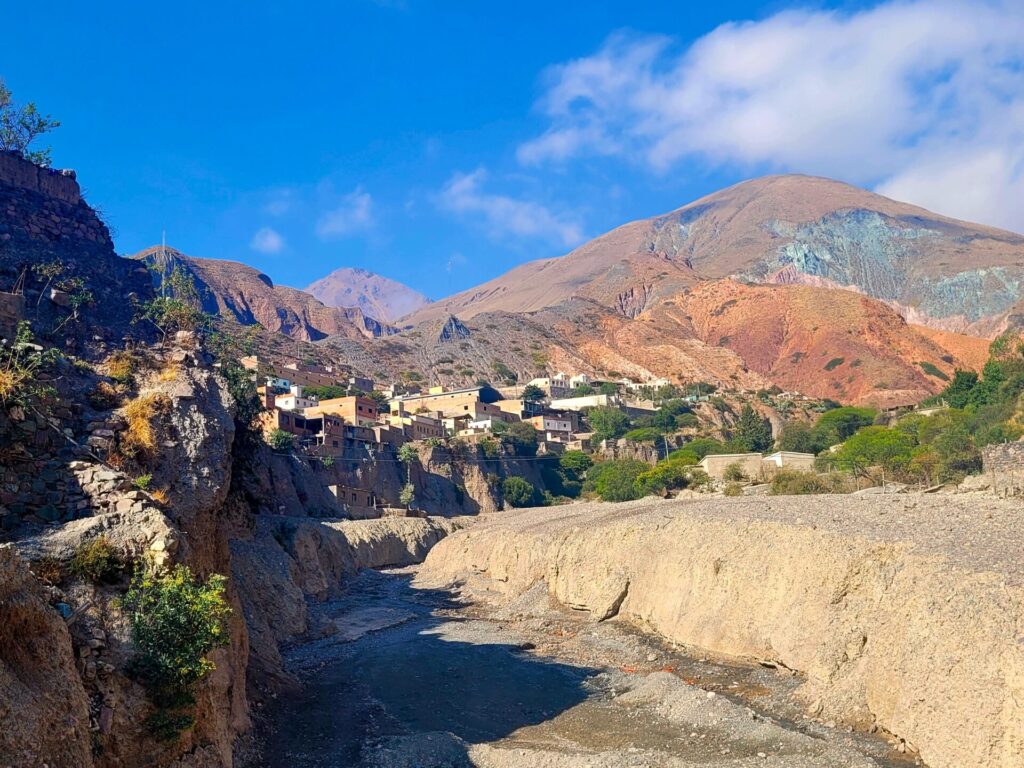
This area is truly unique and offers some great hiking opportunities, including Mirador del Cóndor and San Isidro.


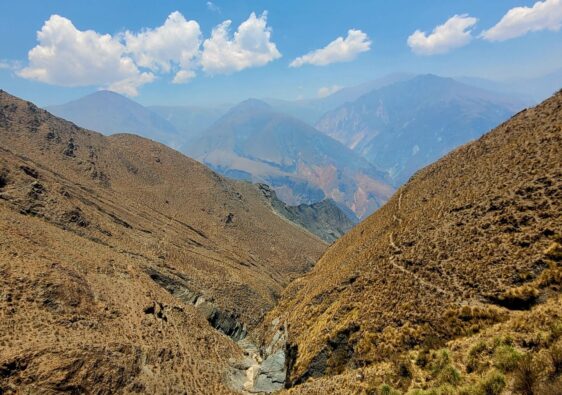

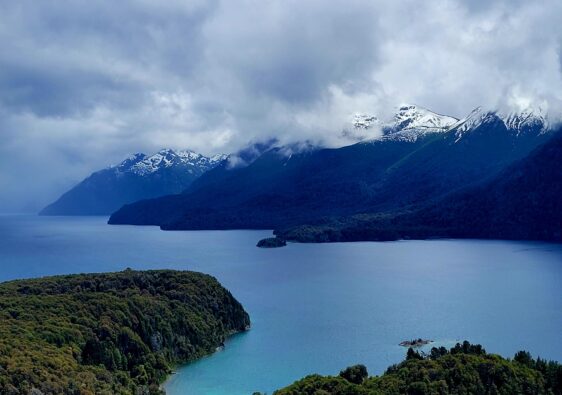
This is right up my alley! Thank you for this information. It’s really helpful. Especially the bus details and the cost. I’m all about independent travel and this place looks amazing!
A great comprehensive guide! Thanks for sharing these hikes and providing all the extra logistical information.
It must be amazing to escape winter and go hiking here. I love your photos. Wow!
These hikes all sound amazing! I tend to prefer moderate hikes that are still a challenge, but that I can finish in one day, so Refugio Frey sounds amazing! The views on the easy loop look beautiful too though, so I’d probably tackle that one as well. Thanks for sharing!
These hikes look absolutely incredible! Argentina’s landscape is stunning, I would love to see it in real one day 🙂
Wow, this looks like a beautiful place to go hiking! I’d love to explore more of Argentina so will definitely add this to my list. Your photos of the views are beautiful.
Villa Tacul Loop sounds like the one for me. Easy and beautiful.
All three hikes look great, but I think I would pick the easy hike to start. Argentina looks amazing! Adding these to my planning list 🙂
I love that you provided hikes for all levels, and they all have great views!
This hike looks stunning! I love Argentina, but haven’t made it to this region yet. Hopefully one day!